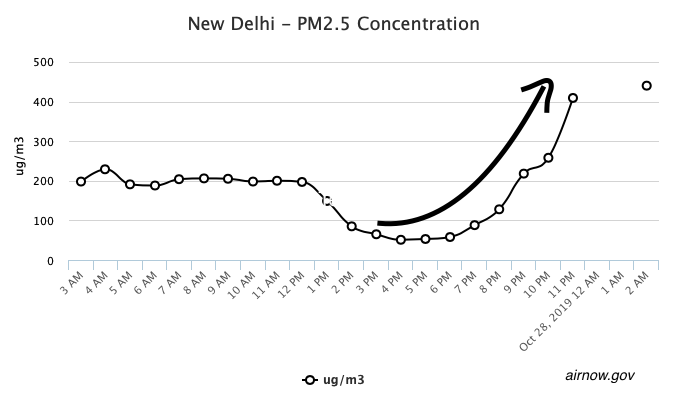
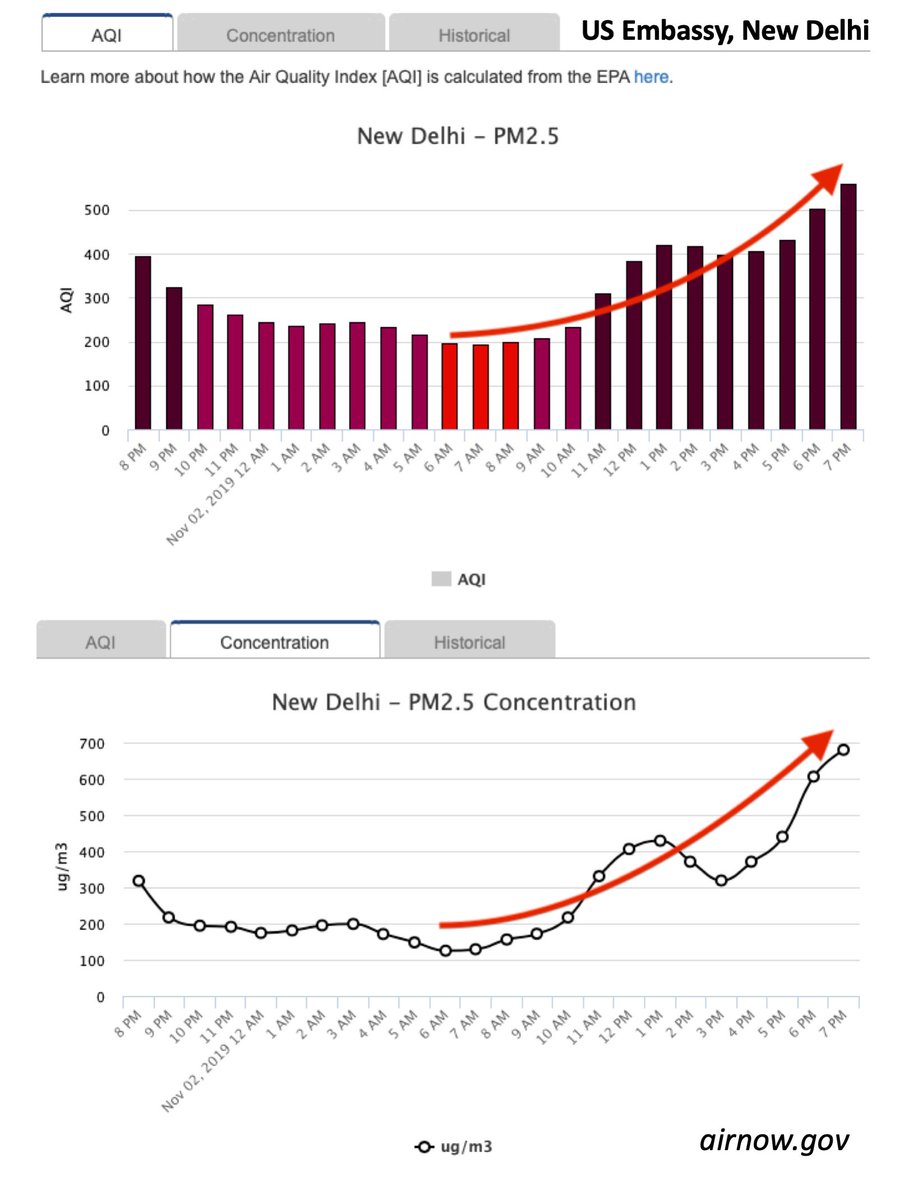
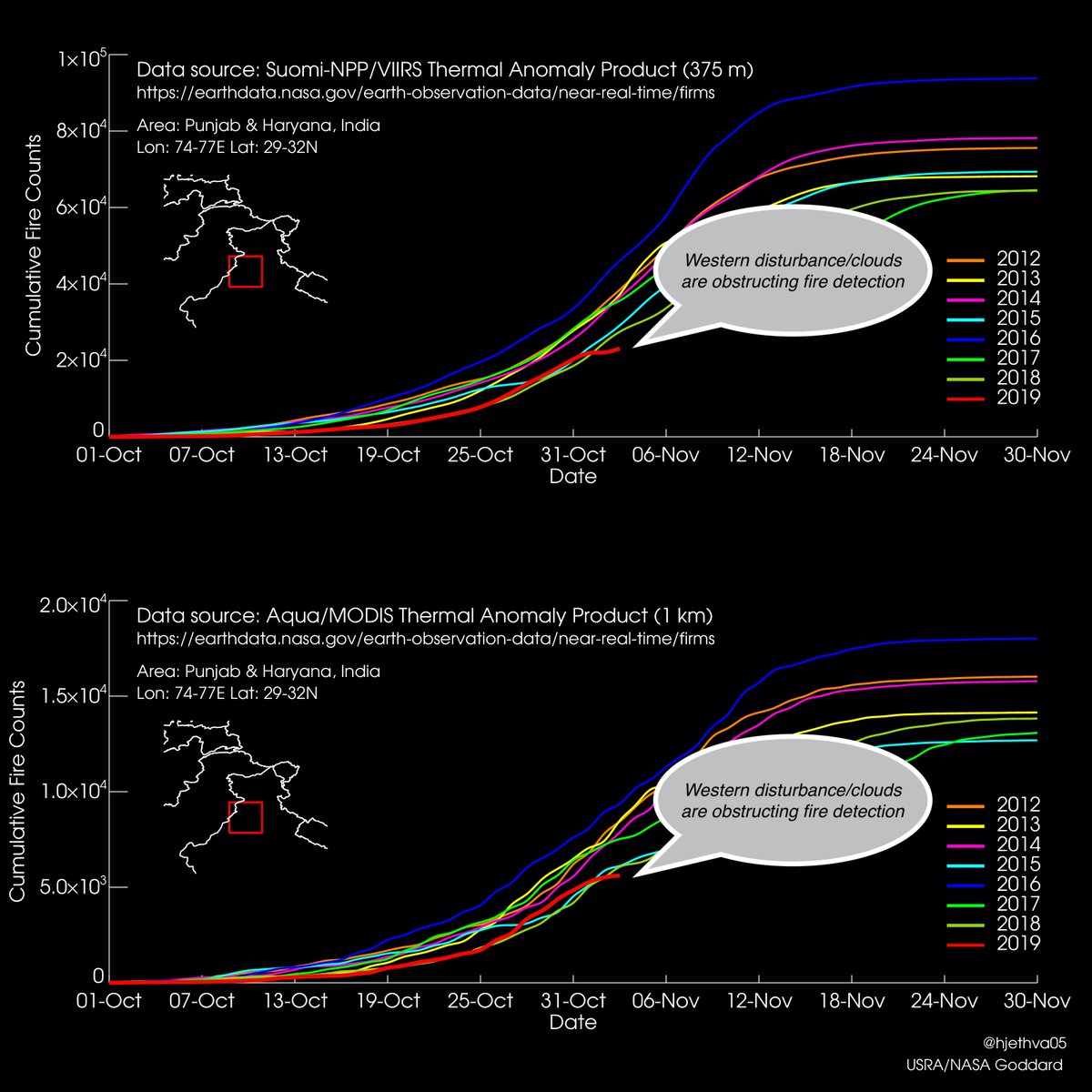
earthobservatory.nasa.gov/images/145827/…
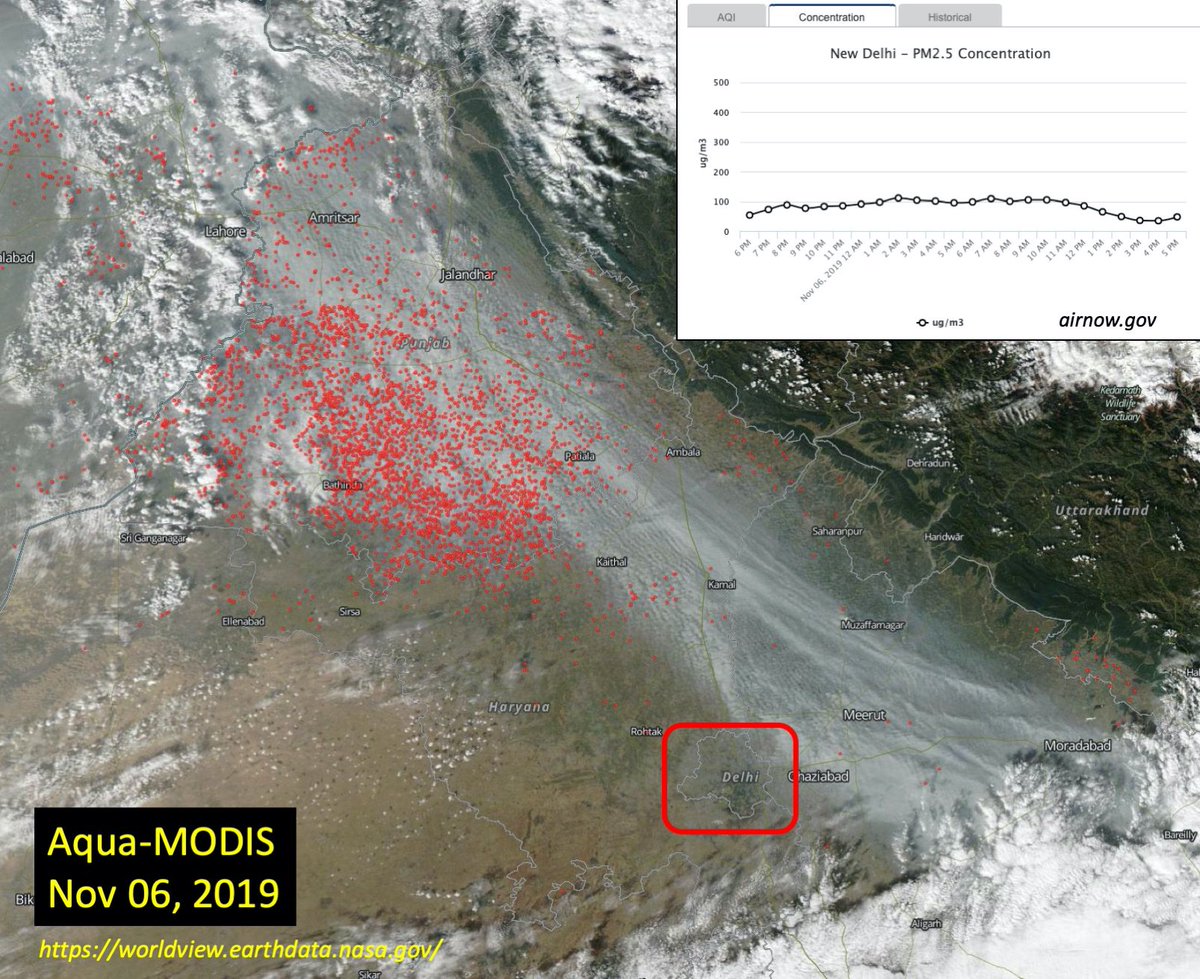
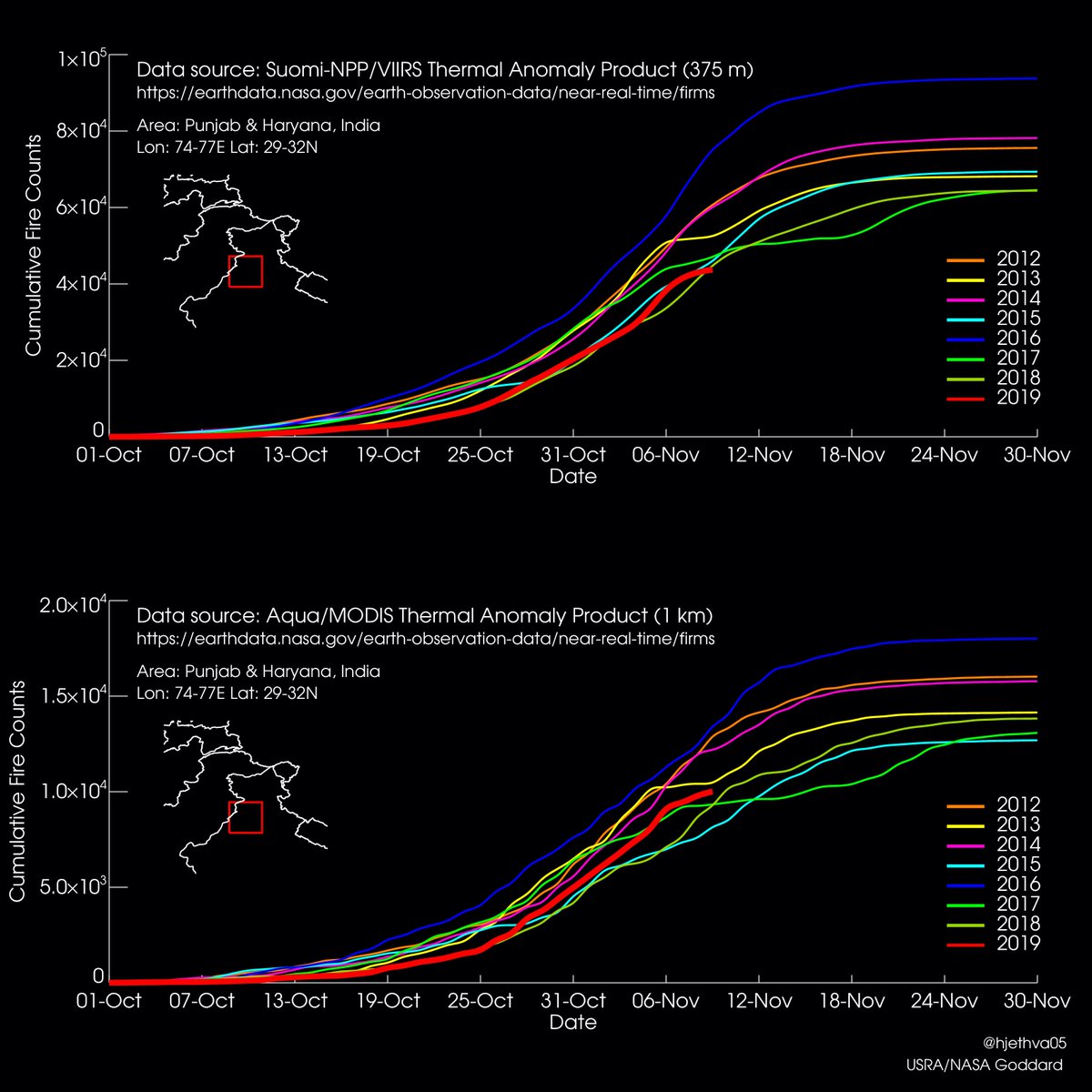
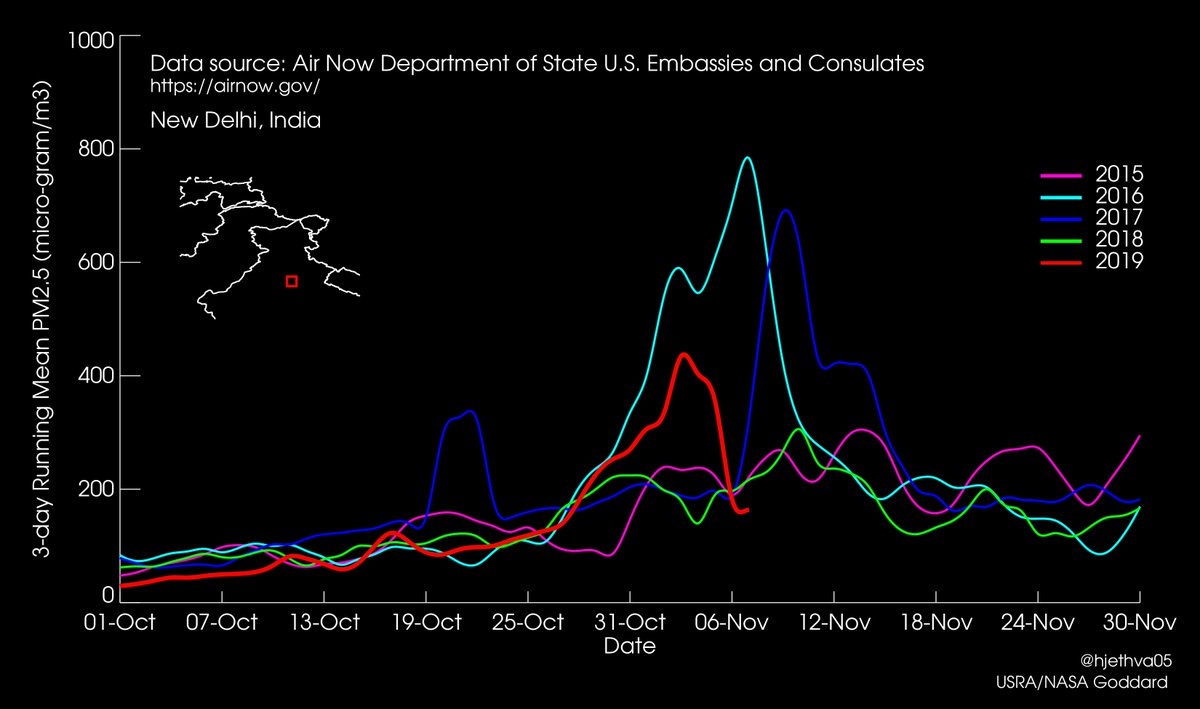
Major findings:
1) rice production in Punjab has increased by 25%, and so has the vegetation index (NDVI) with a net increase of 21%
1/n
3) ground-level PM2.5 downwind in New Delhi shows a concurrent uptrend of net 60%
2/n
3/n




